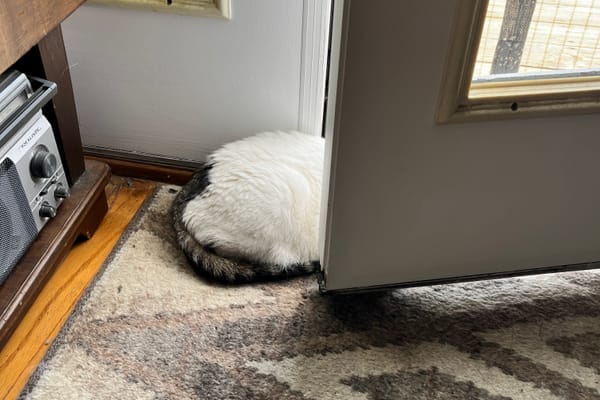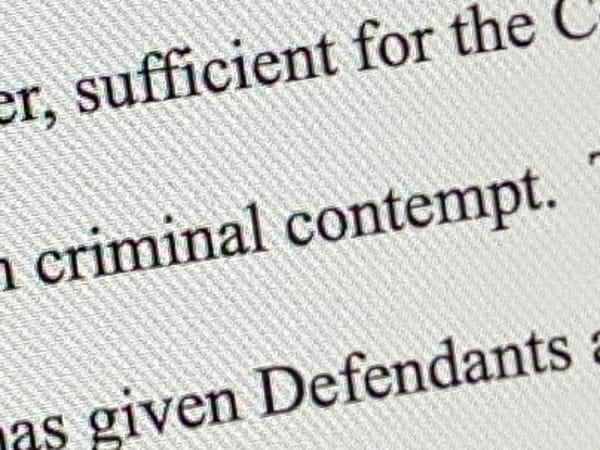Indignity Vol. 1, No. 36: Trigger warnings.
THE WORST THING WE READ THIS WEEK™

Where Does Lethal Force Fit Into the Culture Wars?
WHAT IDEOLOGY ARE your kids being forced to obey at school that no one would have ever dreamed of indoctrinating your generation with? Which political beliefs are being imposed on you at awkward workplace trainings, where your own values are treated as beyond the pale?
America, David Brooks told the readers of the New York Times in his last opinion column before Election Day, is trapped in a "battle of subcultures"—a symptom, as his headline put it, of "The Self-Isolation of the American Left." In Virginia, where Republican Glenn Youngkin was running for governor with an attack on the educational system, parents were upset that "there might be" something radical being taught to their children Brooks wrote, and they were not satisfied with being told there was not:
Parents and legislators often respond with a lot of nonsense about critical race theory and sometimes by legalizing their own forms of ideological censorship. But their core intuition is not crazy: One subculture is sometimes using its cultural power to try to make its views dominant, often through intimidation.
When people sense that those with cultural power are imposing ideologies on their own families, you can expect the reaction will be swift and fierce.
In retrospect, this was the clearest sign that Youngkin was going to win. Milquetoast Reaganite David Brooks, after wandering embarrassed in the wilderness under the vulgarity of Donald Trump, had found something that could make him feel swift and fierce again. The advocate of civility and civic purpose, signatory of the Harper's letter deploring illiberal discourse, could take the side of the people shouting at school-board meetings, with their "sense" that "cultural power" was being wielded against them. He could feel, once again, like a cowboy or maybe a steelworker; he could believe that the will of the people was good and useful.
Youngkin had only barely tuned the Republican dog whistle back up out of the tugboat-horn range where Trump had been blasting it. This was a candidate who put out an ad with a blond woman fuming into a camera about how her son was traumatized by the anti-racist reading he was given at school (the camera panned over a rustic painted portrait of her white family, then back). But it was enough to allow the centrists and the professionally palatable conservatives to go on the attack again, to declare that the liberals had antagonized Real Americans with Critical Race Theory and were paying the price.
Republicans, 10 months after racist militias led their president's supporters in storming the Capitol, were back to being the victims in the culture war. Ross Douthat, Brooks' more vigorously culture-warring stablemate at the Times, celebrated the result by writing, "You can tell people that C.R.T. is a right-wing fantasy all you want, but this debate was actually instigated not by right-wing parents but by an ideological transformation on the left."
Douthat is usually clever about shading the truth to his advantage, but here he resorted to a brazen lie. The entire attack on "Critical Race Theory"—that is, on a hodgepodge of accurate history lessons, overwrought sensitivity trainings, racial integration efforts, and whatever else could be lumped together under Black people and liberals offending conservative whites—was openly and explicitly instigated by the conservative movement, under the guidance of the activist Christopher Rufo. Rufo and his backers publicly took credit for the propaganda campaign as it unfolded. Claiming it originated on the left is like saying the House Democratic Caucus was responsible for Frank Luntz's campaign against the "death tax."
Nevertheless, the centrists were stampeding along behind the rightists, eager to restore the balance between two normal political parties, and to return to the age-old message that the Democrats were too ideological and too invested in Black people's interests. The Times numbers pundit Nate Cohn was on Twitter endorsing the same message as its right-wingers, praising Youngkin for his "implicit aspiration to a postracial, colorblind society" and declaring that the movement against Critical Race Theory was "clearly potent stuff."
As a parent of school-age children though, and as a person who has recently worked in a workplace, I was struck by that formulation Brooks offered: "One subculture is sometimes using its cultural power to try to make its views dominant, often through intimidation." The word "intimidation," especially.
It's true that the political landscape of America has changed dramatically in my lifetime, in ways that many normal people could find frightening. Here, for instance, is one thing my children have been taught in school: before their classes were even learning how to read and write, they were instructed on how to turn out the lights and crouch down out of view, in case it was ever their school's turn for a gun massacre. Here are things I've been taught at a workplace training, taking me away from the job I was being paid to do: a filing cabinet full of paper is your best bet to stop a bullet; you can loop a belt around the door-closer arm on a bathroom door to barricade against a gunman; the cops won't stop to treat your wounds if they still think the shooter is at large.
Which political subculture has seized control of American life, and shoved that fact in everyone else's faces? Everywhere, gun nuts are agitating to carry and flaunt their weapons—in enclosed spaces, at sporting events, while drinking in bars, at protests. Especially at protests. Right-wingers brandished guns outside the ballot-counting centers as they raged against the idea that Trump could have lost the election. When the rioters finally were driven out of the Capitol, they shouted they'd be back with guns.
For decades, activists have demanded more and more deference to their power to carry deadly weapons, and radical lawmakers and judges have kept granting it to them. Gun makers are shielded from liability; the federal government is forbidden from keeping a computerized record of gun sales; public health research into gun violence has been systematically defunded. In churches, malls, supermarkets, movie theaters—public life everywhere is shadowed by the threat of slaughter, because no limits on guns are possible.
Even as the pundits were declaring that regular people would not stand being bullied by critical race theory, Justice Samuel Alito was demanding to know, in oral arguments about a gun case, how New York City could justify its longstanding practice not letting ordinary subway passengers carry firearms. How could they deny people the right to feel safe against all the dangers of the subway? the non–New Yorker demanded. Soon enough, it seems, there will be guns on the subway my children ride to school. Whose cultural power will be ascendent then? And who will have the right to get angry about it?
Correction: Due to a counting error, this post originally said it has been 11 months since the Capitol attack; it has been 10.






